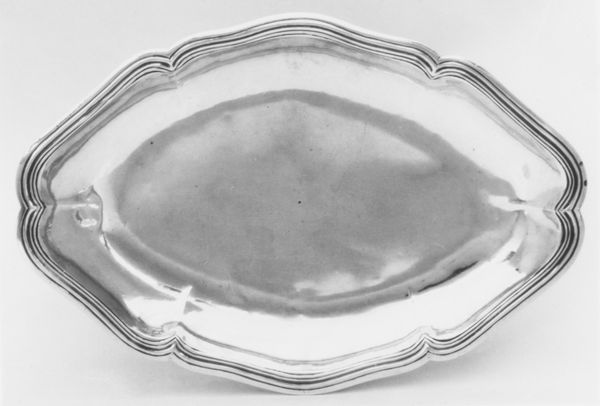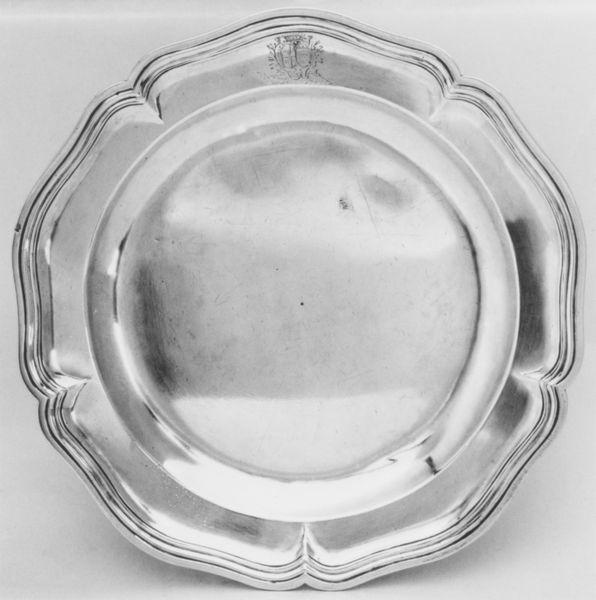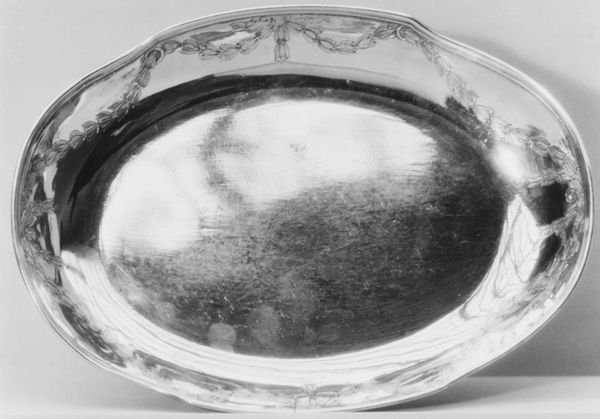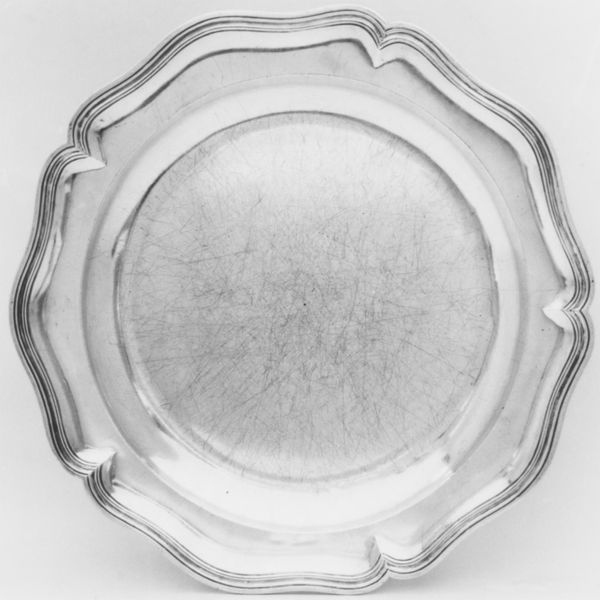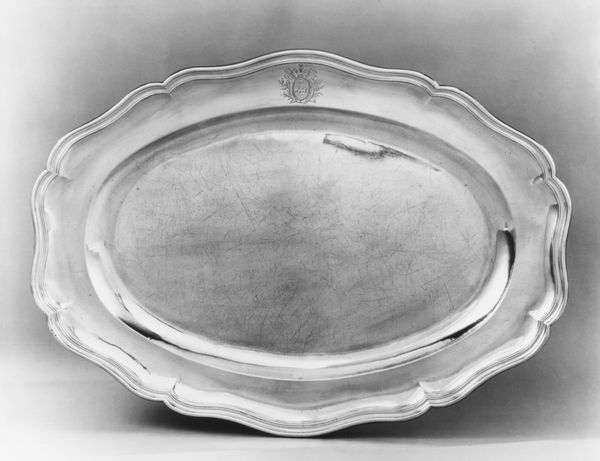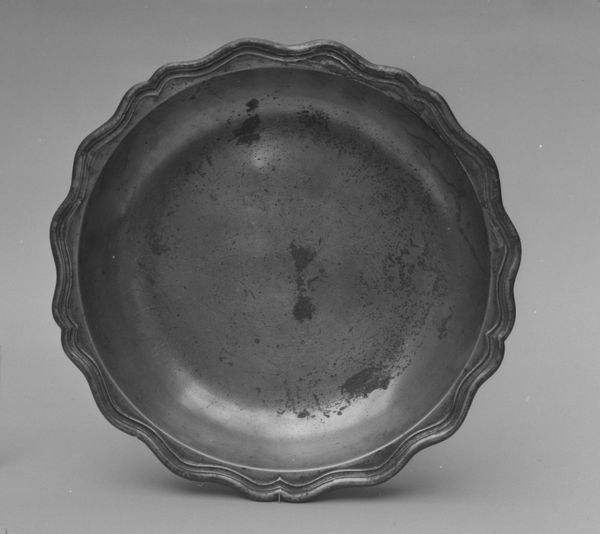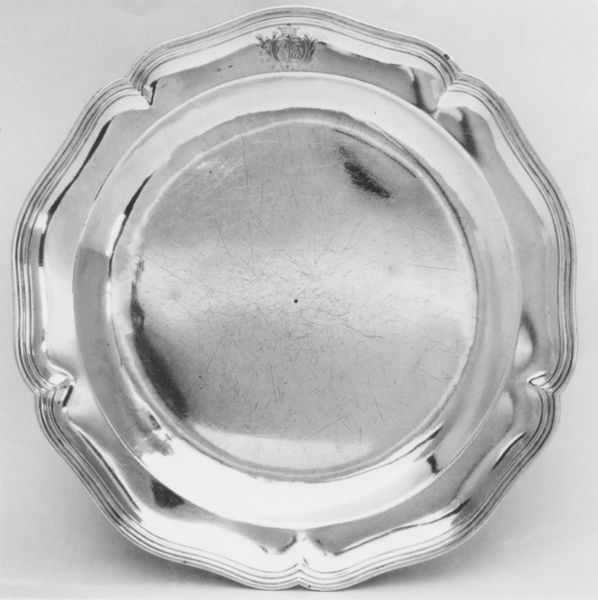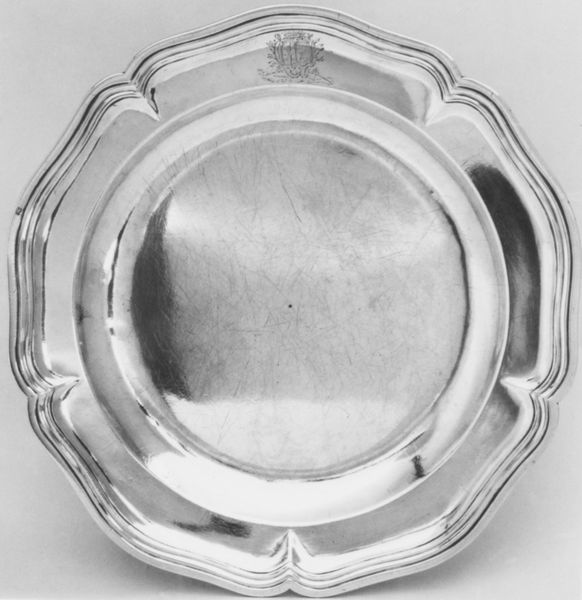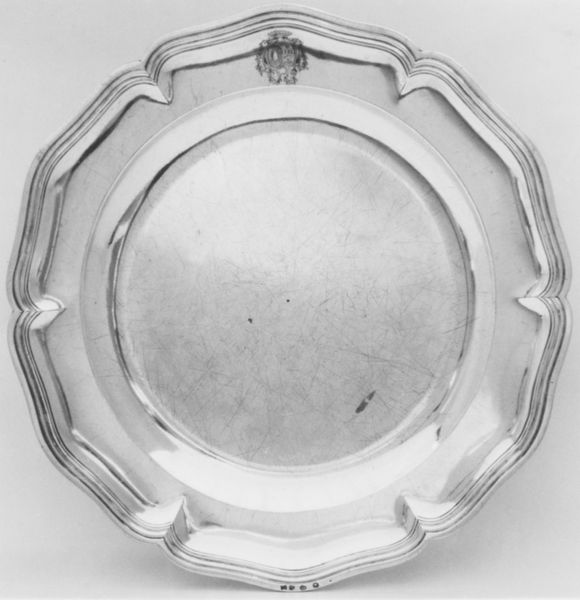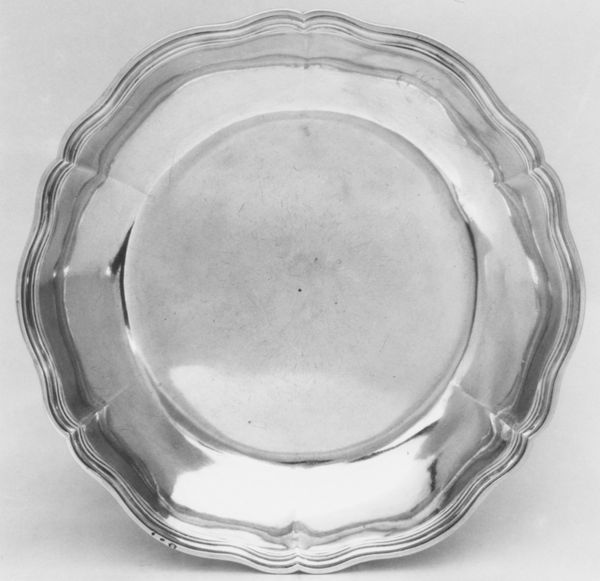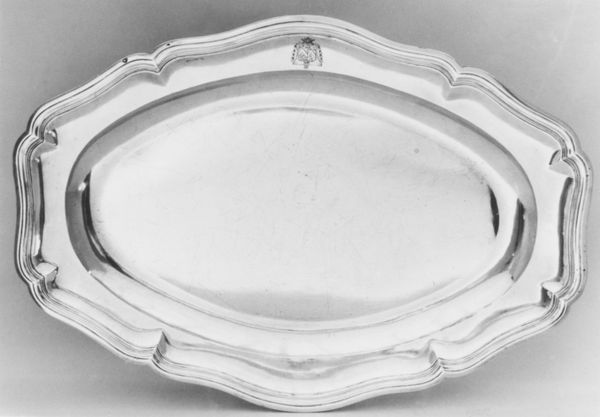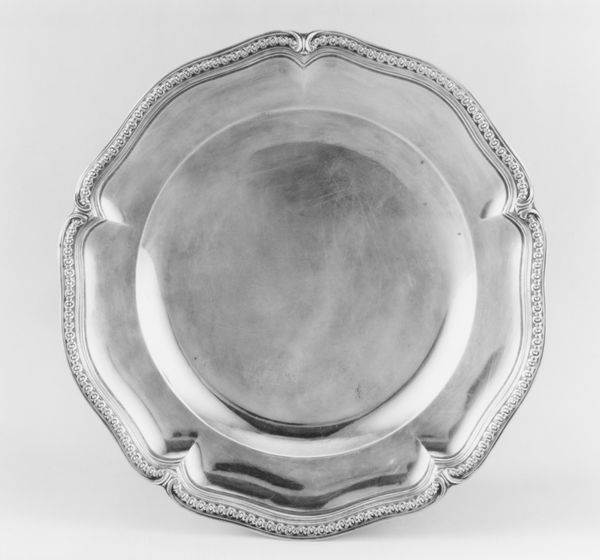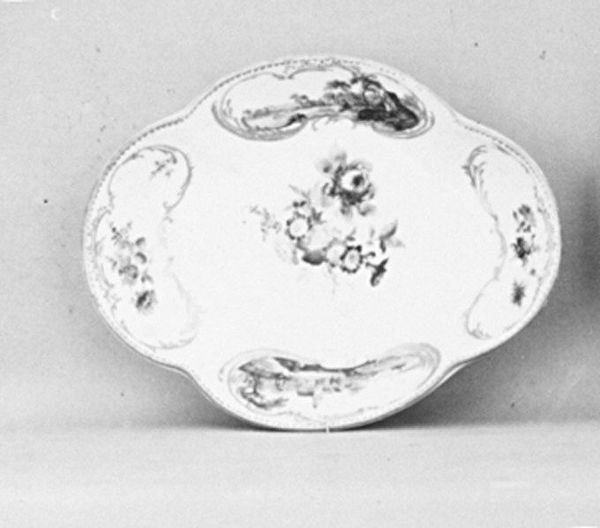
Dimensions: Overall: 3 3/4 × 6 3/8 × 8 3/4 in. (9.5 × 16.2 × 22.2 cm)
Copyright: Public Domain
Editor: Here we have Michel-Toussaint Viot's silver "Tray", crafted between 1772 and 1773. It's a beautiful example of Baroque decorative art. The way the light reflects off the silver creates this mesmerizing effect. What do you see in this piece? Curator: This isn't simply a beautiful object; it's a historical artifact brimming with socio-political meaning. Silverware in the Baroque period spoke volumes about power, wealth, and societal hierarchy. Think about who owned this. Serving food on something so costly reinforces ideas around class division and privilege. Editor: That's interesting! I hadn’t considered its political implications. Curator: Consider the Baroque style itself—it's grandiose, ornate, excessive. In many ways it mirrors the culture of the aristocracy. The very act of possessing such an object implies access to resources that were systemically denied to others. Can we separate the aesthetic from the political statement it makes? Editor: So, looking at its history challenges us to think about inequality… Curator: Absolutely! Who were the silversmiths? Who mined the silver? Who benefitted from its existence? Even something as seemingly simple as a tray has a story of exploitation baked into it. Engaging with these histories can encourage new conversations about inequity and ethics. Editor: It changes everything to see it this way. Thank you, I appreciate your perspective! Curator: It goes both ways. It's through these dialogues we truly reveal art's capacity to speak across centuries, about social justice and transformative politics.
Comments
No comments
Be the first to comment and join the conversation on the ultimate creative platform.
